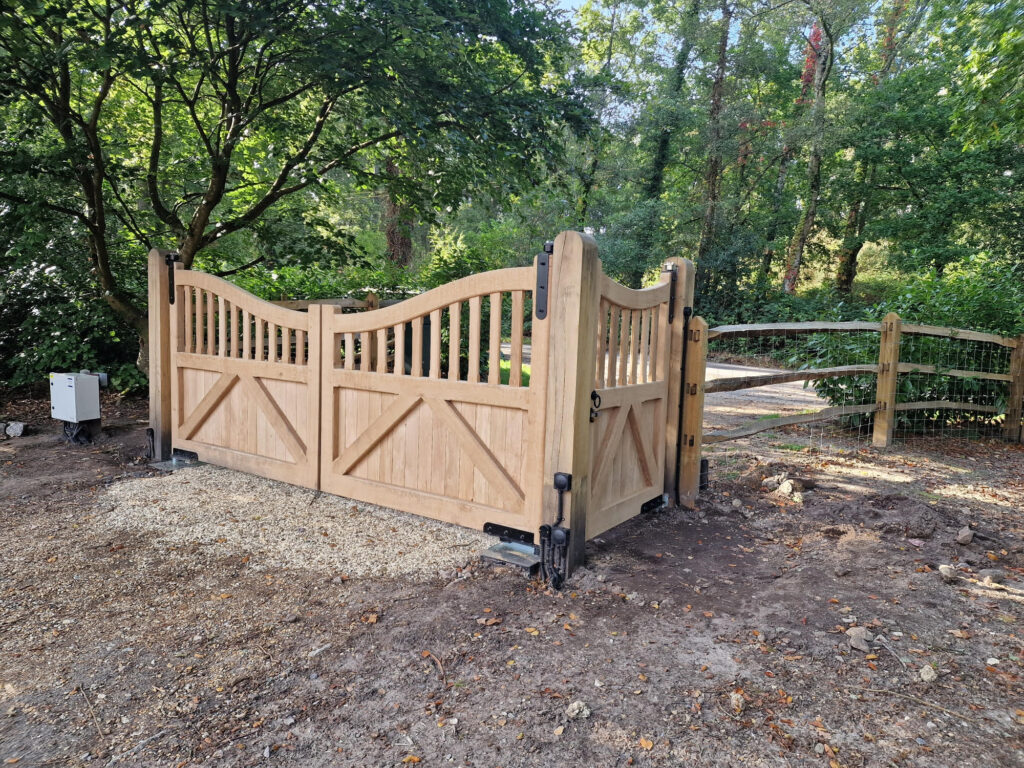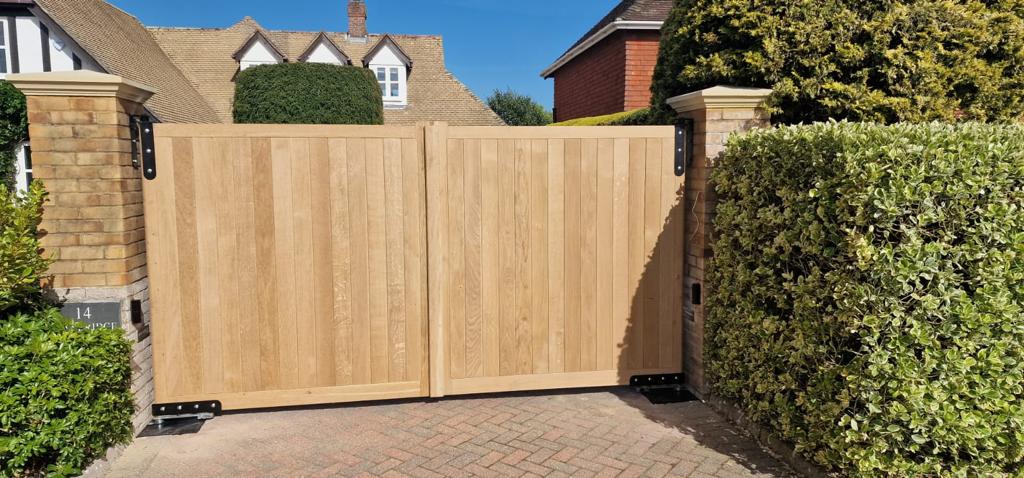Elevate Your Property with Automatic Gates!
Unlock the potential of your property, big or small, with the convenience and security of electric gates from Autogate. Wondering how to choose the ideal automatic gate for your compact driveway? Let’s explore our expert tips to find your perfect match!
Exploring Gate Types
Discover the right gate style to suit your space:
- Bi-Fold Gates: Ideal for limited space, these gates elegantly open like a book, utilising minimal space.
- Sliding Gates: Maximise your driveway space by sliding gates parallel to the fence line, perfect for properties near roads.
- Telescopic Sliding Gates: Customisable and sleek, these gates split into multiple parts, optimising narrow entrances.
- Curved Electric Gates: Tailored to fit snugly in complex areas while ensuring top-notch security.
Choosing the Right Track
Select the perfect gate track option:
- Tracked Sliding Gates: Ideal for even surfaces, offering smooth operation with a track system.
- Cantilever Sliding Gates: Trackless and perfect for rough terrains, providing seamless access without tracks.
Material Matters: Wood vs. Metal
Consider the aesthetics and durability of your gate material:
- Wooden Gates: Classic charm meets functionality, enhancing your property’s curb appeal.
- Metal Gates: Sleek, modern, and robust, ensuring long-lasting performance and security.
Access Control Solutions
Ensure seamless access management with our cutting-edge controls:
- Keypad Entry: Securely control access with a custom 4-digit code, granting entry to authorised individuals.
- Intercom Systems: Enhance privacy and security with wired or wireless intercoms, tailored to your needs.
- Timer Controls: Take charge of gate operations with customisable scheduling, perfect for businesses and homes alike.
Elevate Your Property with Autogate!
Transform your property’s security and aesthetics with our premium automatic gates. Ready to discuss your gate design? Contact our expert team today for personalised assistance and seamless installation.
Contact Autogate Now!
Unlock the potential of your property with Autogate’s premium automatic gates. Call us today at 01420 487700 to elevate your property’s security and style!









